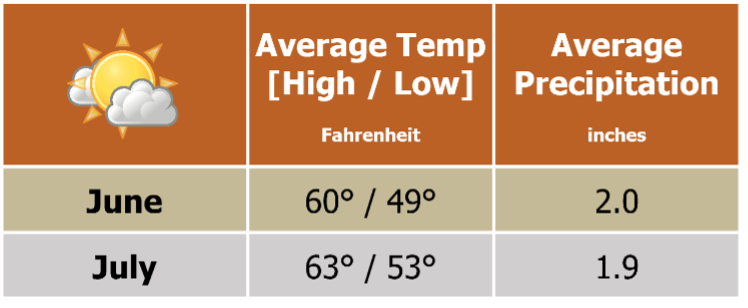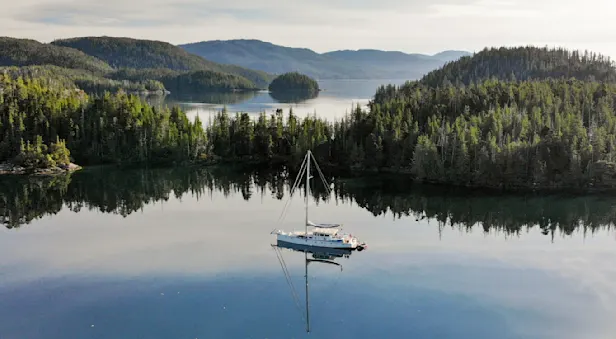
Know Before You Go
Weather & Climate in Haida Gwaii
Precipitation in British Columbia is strongly influenced by the lay of the land and the direction of the wind—resulting in an astonishing variation of rainfall from place to place. For example, Kamloops, in the sheltered Thompson River Valley in south-central BC, receives only 10 inches of rain per year, whereas the west coast of Vancouver Island averages an annual total of 110 inches. The Insular Mountains and the western side of the Coast Range are very wet, separated by a drier coastal trough.
East of the Coastal Range lies the Interior Plateau, a relatively dry area, bordered by the wet windward side of the Rocky Mountains. Location on the windward or lee sides of the mountains also greatly influences rainfall, with the windward side usually receiving most of the downpour.
Topography of such great variation also radically affects general temperatures, which vary according to elevation, latitude, slope aspect and inland or coastal location. The coastal zone is influenced by polar maritime air, causing cool and relatively dry summers and mild, wet winters. Most of interior BC is influenced by both continental and maritime air, resulting in colder, relatively dry winters and hot, dry summers.
In the northeast, the main influences are polar continental and arctic air masses. Winters are extremely cold, with plenty of snow, and summers are short, cool and wet. In general, no matter what season you visit British Columbia, take clothing to suit a variety of temperatures and always have a windbreaker and waterproof rain jacket handy!
Our Adventure
There is really no generalization that can be made about the weather in British Columbia, except the fact that it can range from miserable to glorious. You should be prepared for everything. In the spring and summer, coastal BC can have sunny and comfortable weather, but the weather can also be extremely wet and cold!
It is extremely important that you come prepared for any type of weather conditions, including cooler temperatures and heavy rain!
Lightweight, breathable, waterproof gear, including rain jacket (with hood) and rain pants are extremely important for your comfort and enjoyment. Rubber boots are essential!
However, try not to be dismayed if the weather turns bad! It is, after all, part of British Columbia’s character. Storms and clouds can add drama, especially in the mountains. Photographically speaking, days with a high overcast soften the light and reduce harsh contrast. This is the best kind of light for wildlife.
Vancouver

Haida Gwaii

Explore British Columbia’s Coastal Habitats on These Trips

Haida Gwaii: Islands at the Edge of the World
Discover an archipelago of wonder off the coast of British Columbia—explore wild shorelines, ancient rainforest and 12,000 years of Haida culture on an intimate sailboat adventure in the marine wilderness.


Great Bear Rainforest: In Search of Spirit Bears, Grizzlies & Whales
Discover British Columbia at its wildest, in search of the elusive white Spirit Bear in the remote valleys of western Canada's Coast Range. Offshore, scout for humpback whales and orcas in emerald fjords.






























